
Do you have a question about the Ford 2010 F-150 and is the answer not in the manual?
| Brand | Ford |
|---|---|
| Model | 2010 F-150 |
| Category | Automobile |
| Language | English |
Information on safety and environmental protection measures for the vehicle.
Alerts to vehicle conditions that may require attention or indicate a problem.
Explains the function and display of various gauges in the instrument cluster.
Information on audio system features and operation.
Instructions for connecting and playing music from a portable device via the auxiliary jack.
Information on using the USB port for media devices and charging.
General information about radio frequencies and CD/CD player care.
Explains how the MP3 system reads disc structures and playback modes.
Details on SIRIUS satellite radio channels, reception factors, and contact info.
Table detailing radio display messages, conditions, and required actions.
Information on vehicles equipped with a navigation system.
Details on the SYNC system with hands-free communication and media features.
Details on adjusting bass, treble, balance, fade, and speed-compensated volume.
Explains the components and functions of the single zone climate control system.
Details dual zone climate control and heated seat functions.
Explains dual zone climate control with heated/cooled seats (nav-based).
Information on using voice commands with the climate control system.
Instructions for activating/deactivating the rear window defroster.
Instructions for operating headlamps, parking lamps, and fog lamps.
Details on the automatic exterior lighting control system.
Information on operating fog lamps using the headlamp control.
Instructions for activating and deactivating high beam headlamps.
How to use the flash-to-pass feature for signaling.
Information on the function and requirements for daytime running lamps.
How to adjust the instrument panel brightness and turn on interior lamps.
Steps for vertical and horizontal headlamp aim adjustment.
Instructions for operating left/right turn signals and lane change signals.
Details on front row map lamps and rear dome/courtesy lamps.
Information on activating and adjusting ambient interior lighting.
Information on replacing exterior lamps and condensation.
Instructions for replacing exterior bulbs, including headlamps.
Operation of windshield wipers and rain sensing wipers.
Details on automatic activation and sensitivity of rain sensing wipers.
Instructions for using the windshield washer and courtesy wipe feature.
Steps for adjusting the tilt steering wheel to a desired position.
Manual adjustment of the steering column using the rocker control.
How the seat moves for easy entry/exit when the key is removed or inserted.
Saving and recalling steering column positions with memory features.
How to turn on the visor mirror lamp by lifting the mirror cover.
Adjusting the sun visor for increased sunlight coverage.
Details on storage features like cupholders, tissue holder, and power point.
Information on the compass display and factors affecting accuracy.
Steps to adjust the compass zone setting for accurate readings.
Procedure for calibrating the compass in an open area.
Information on using power outlets for accessory plugs and precautions.
Safety warnings and instructions for operating power windows.
Explanation of wind throb noise with open rear windows and alleviation.
How to operate the driver's window with one-touch down feature.
How the window lock feature restricts power window operation.
Instructions for operating the power sliding back window.
How window switches function with accessory delay after ignition off.
How to adjust the interior rearview mirror for optimal viewing.
Details on the auto-dimming feature of the interior rearview mirror.
Information on power side view mirrors and their adjustment.
Instructions for folding and unfolding side mirrors using the power switch.
How to activate heated mirrors for ice and snow removal.
How the mirror turn signal indicator functions and works.
Information on extending trailer tow mirrors for better visibility.
Instructions for adjusting power adjustable foot pedals.
Details on automatic and manual operation of deployable running boards.
Information on maintaining a set speed without using the accelerator pedal.
Steps for setting and activating the speed control system.
How to disengage the speed control system.
How to return the vehicle to a previously set speed.
Methods to increase the set speed using the speed control.
Methods to reduce the set speed using the speed control.
Ways to turn off the speed control system.
Radio control features accessed via steering wheel buttons.
Using voice commands and phone features with the SYNC system.
Using voice commands with the navigation system and SYNC.
Instructions for operating the moon roof and its features.
Information on the universal garage door opener and its appearance.
Replacing transmitters with a single built-in HomeLink device for garage doors.
Steps for programming HomeLink buttons with a vehicle parked in the garage.
Procedures for programming HomeLink for gate operators or Canadian systems.
How to erase all programmed HomeLink buttons simultaneously.
Steps to program a device to a HomeLink button previously trained.
Information on the Car2U system for garage doors and home devices.
Time-sensitive steps for programming rolling code garage door openers.
Steps for programming fixed code garage door openers using DIP switches.
Procedure to erase programmed Car2U system buttons for security.
How to engage and disengage the tailgate lock using the ignition key.
Step-by-step instructions for removing the tailgate.
Instructions for opening and closing the tailgate step.
How to deploy and stow the box side step for truck bed access.
Information on the bed extender cargo management feature.
Details on the cargo management system and rail package.
Instructions for installing and removing cross bars for cargo.
Information on the bed divider and T-slot attachments for cargo.
Details on positioning, removing, and locking side mounted tool bins.
Information on vehicle keys, operation, and replacement.
Explanation of the MyKey feature for restricted driving modes.
Steps to program a restricted driving mode key (MyKey).
How to program optional MyKey settings like speed and volume limits.
Procedure to reset all MyKeys to admin keys.
How to check the status of MyKey system parameters.
Compatibility and programming of MyKey with remote start systems.
Instructions for unlocking and locking doors using the power lock control.
How the smart unlocking feature prevents locking oneself out.
Explanation of the autolock feature and when doors lock automatically.
Four methods to enable or disable the autolock feature.
Procedure for configuring power door lock/unlock behavior.
Steps to enable/disable autolock using the keyless entry keypad.
Explains when all doors unlock automatically.
Four methods to enable or disable the autounlock feature.
Procedure to enable/disable autounlock using the power door lock switch.
Procedure to enable/disable autounlock using the keyless entry keypad.
Information on setting and using childproof door locks.
Compliance information for the remote entry system.
How to unlock doors using a two-step process.
How to unlock doors using a one-step process.
How to switch between two-step and one-step door unlocking.
Instructions for locking all doors using the remote entry transmitter.
How to locate the vehicle using the horn and turn signals.
How to activate and deactivate the panic alarm.
Activating the memory feature to save seat, mirror, pedal, and column positions.
Deactivating the memory feature from the transmitter.
Instructions for replacing the battery in the remote entry transmitter.
Steps for removing lost transmitters from vehicle memory.
Procedure for programming remote transmitters yourself.
How interior and parking lamps illuminate when unlocking doors.
Using the keyless entry keypad for various functions.
Explanation of the anti-theft feature that provides a one-minute lockout.
Steps to create a personal entry code for the keyless entry keypad.
How to erase a personal entry code, reverting to factory code.
Using the keypad to unlock/lock doors and operate interior lamps.
Information on the engine immobilization system.
Location and function of the anti-theft indicator light.
How the vehicle's security system automatically arms after ignition is off.
How the security system disarms when a coded key is used.
Information on obtaining and programming replacement keys.
Procedure for programming spare keys using existing coded keys.
Covers safety restraints, airbags, and child seat installation.
Warnings and guidelines related to seatback adjustment and cargo.
Information on vertically adjustable front row head restraints.
Instructions for moving the front seat forward/rearward using the release bar.
How to operate the armrest and access cup holders.
How to adjust manual lumbar support for the seat.
Safety warnings and instructions for adjusting the front power seat.
How to recline the seatback forward or rearward using the control.
Automatic positioning of seat, mirrors, pedals, and steering column.
How the driver's seat moves for easy entry/exit.
How to turn the easy entry/exit feature on or off via message center or procedure.
Instructions for operating heated seats and system automatic shut-off.
Controls for climate-controlled seats located on the DEATC system.
Information on vertically adjustable second-row head restraints.
How to flip up the rear seat cushions for storage.
Steps to return the rear seat cushion to its original position.
How to flip up the SuperCrew rear seat cushions for storage.
How to access the rear seat armrest and cupholders.
Instructions for operating rear heated seats.
Information about the Personal Safety System and its components.
Explanation of the Personal Safety System and its function.
Details on dual-stage airbags and inflation energy levels.
How the sensor detects impact severity to modify airbag deployment.
How the seat position sensor tailors airbag deployment based on seat position.
How the system disables front airbags based on occupant detection.
How sensors in buckles provide data to the Personal Safety System.
How pretensioners tighten safety belts during frontal collisions.
How energy management retractors allow webbing payout and limit load.
How to determine system operation via warning light or tone.
General safety precautions for driving and wearing safety belts.
Instructions for fastening and unfastening combination lap and shoulder belts.
Warning to always use both lap and shoulder belts in the center seat.
How the cinch tongue adjusts lap belt portion for proper fit.
Steps for fastening the cinch tongue safety belt.
Adjusting the lap belt for the front center seat.
Steps for buckling and extracting the belt for automatic locking.
How to disengage automatic locking and activate vehicle sensitive mode.
Information on safety belt pretensioners and their activation during crashes.
How sensors in buckles provide data to the Personal Safety System.
How to adjust the shoulder belt height for proper positioning.
How the warning light and chime remind occupants to fasten belts.
Supplemental warning feature providing reminders to buckle safety belts.
Procedure to independently deactivate/activate Belt-Minder for driver and passenger.
Information on the available 8-inch safety belt extension assembly.
Details on the airbag system, its components, and function.
Explains the design and function of the side airbag system.
Crucial safety precautions regarding airbag deployment and positioning.
Safety information about airbags and child restraint placement.
Explanation of how the airbag system activates and its effects.
How the system disables front airbags based on occupant detection.
Safety precautions and warnings related to seat-mounted side airbags.
Safety precautions and warnings for the Safety Canopy system.
Explains the design and function of the Safety Canopy system.
Information on the system that activates hazard lamps and horn after a serious impact.
Instructions for disposing of airbags and related components.
Information on properly using safety restraints for children.
Crucial precautions for selecting and using child safety restraints.
Guidelines for choosing appropriate restraint types based on child's size and age.
Indicates attachment methods for child safety restraints using LATCH or seat belts.
General advice and precautions for transporting children safely.
Information on selecting and installing infant and toddler safety seats.
Guidelines for choosing and installing infant/toddler safety seats.
Steps for installing child seats using seat belts in various positions.
Avoid installing child seats in front center lap belt positions if possible.
Information on using LATCH anchors for child seat installation.
Guidelines for using inboard lower anchors for center seating.
How to combine safety belts and LATCH anchors for child seat installation.
Instructions for attaching child safety seats using tether straps.
How to attach tether straps to rear seat loops and anchors.
Information on booster seats for children who have outgrown safety seats.
Criteria for determining when children need to use booster seats.
Description of backless and high-back booster seats.
Instructions for inspecting and maintaining child restraints and safety belts.
Handling differences and rollover risks for utility vehicles and trucks.
Overview of vehicle characteristics and their differences from cars.
Information on 4WD/AWD systems and their traction benefits.
Explains how SUVs and trucks handle differently due to design.
Explanation of tire quality grades: Treadwear, Traction, and Temperature.
Explanation of the treadwear grade and its meaning.
General information on tire service and maintenance.
Definitions of common tire terms and labels.
Guidelines for checking and inflating tire pressure for safe operation.
Information on identifying and when to replace tires due to wear.
Instructions for inspecting tires for damage and when to seek professional inspection.
Information about tire degradation over time and replacement recommendations.
Explanation of information found on tire sidewalls, including DOT code.
Guidelines for replacing tires and wheels, and warnings about non-recommended parts.
Additional information on "T" type tires beyond "P" type tires.
Where to find the tire label containing pressure and size information.
Information on the TPMS, low tire pressure warnings, and malfunction indicators.
Precautions when changing tires on vehicles equipped with TPMS.
How the TPMS measures tire pressure and warns of low pressure.
Troubleshooting chart for TPMS warning lights and customer actions.
How TPMS may not respond immediately to added air pressure.
Explanation of how temperature changes affect tire pressure readings.
Procedure to reset TPMS after tire rotation on vehicles with different front/rear pressures.
Step-by-step instructions for performing the TPMS reset.
Guidelines for using snow tires and chains, including warnings.
Guidance on proper vehicle and trailer loading to stay within design limits.
Calculations to determine available cargo and luggage load capacity.
Information on trailer towing capacity and weight limits.
Information on using proper equipment and attaching it to the vehicle.
Advice on selecting and using appropriate trailer hitches.
Procedure for hooking up a trailer using a load-equalizing hitch.
Instructions for connecting trailer safety chains to the hitch.
Information on trailer brake systems and installation requirements.
Details on the integrated electronic trailer brake controller (TBC).
Instructions for adjusting the GAIN setting for trailer brakes.
How trailer sway control detects and reduces trailer sway.
How to disable trailer sway control and warnings associated with it.
Instructions on ignition positions and preparing to start the vehicle.
Information on engine starting control and important safety precautions.
Key safety tips for operating the vehicle, including engine RPM and snow conditions.
Checklist for ensuring safety belts are buckled and accessories are off.
Step-by-step instructions for starting the engine.
Starting characteristics and procedures for flexible fuel vehicles in cold weather.
Precautions to take to avoid the dangerous effects of exhaust fumes.
Information on the engine block heater and its operation.
Information on brake noise, ABS, and parking brake operation.
Explanation of the ABS system and normal operating characteristics.
How to use the ABS system during hard braking.
Information on the ABS warning lamp and potential system issues.
Instructions for setting and releasing the parking brake.
Details on stability enhancement features like TCS, ESC, and RSC.
How traction control helps maintain traction by controlling wheel spin.
How ESC enhances directional stability during adverse maneuvers.
How RSC helps maintain roll stability by detecting roll motion.
How to switch off AdvanceTrac with RSC system for specific conditions.
Tips to prevent damage to the power steering system.
Information on the limited-slip axle for added traction on slippery surfaces.
Details on the ELD axle for enhanced traction in off-road conditions.
Warnings about utility vehicle handling and rollover risks.
Information on the park/brake-shift interlock feature.
Explanation of the brake-shift interlock feature for floor-shift transmissions.
Understanding gearshift positions of the 4-speed automatic transmission.
Explains the vehicle's fuel economy design and shift strategy.
Information on the Park position, including locking the transmission.
How to use the Reverse gear and stop before shifting.
Information on using the Neutral position for starting or rolling.
Normal driving position for best fuel economy.
How the Tow/Haul feature improves transmission operation for towing.
Information on using second gear for starting or engine braking.
Information on using first gear for maximum engine braking.
How to force downshifts by pressing the accelerator.
How the 6-speed transmission improves fuel economy and shift strategy.
How to rock the vehicle to get unstuck and warnings about potential damage.
Precautions for performing emergency maneuvers like sharp turns or stops.
Parking instructions, especially for 4WD vehicles in Neutral.
Information on how 4WD systems work and their operation.
Describes normal sounds during 4WD engagement and operation.
Guidelines for driving safely and effectively on sand terrain.
Precautions for driving through mud and water, including depth limits.
Warnings about driving through deep water and potential transmission damage.
Guidelines for driving on hills and steep inclines safely.
Tips for driving safely on snowy or icy roads, including regaining control.
Recommendations regarding vehicle modifications and maintenance.
Information and recommendations for snowplow applications on F-150 models.
Weight limits and guidelines for selecting and installing a snowplow.
Recommendations for operating the vehicle with a snowplow attached.
How airbag systems may deploy during snowplowing operations.
Instructions for transmission operation when plowing snow.
Information on engine temperature management while operating with a plow.
Information on Ford's complimentary roadside assistance program.
Details on services covered by roadside assistance.
Reference for Canadian customers regarding roadside assistance information.
Location and operation of the hazard flasher control.
Information on the fuel pump shut-off feature after a collision.
Information on fuses, their ratings, protected circuits, and replacement.
Explanation of fuse identification and replacement.
Chart detailing fuse ratings, colors, and protected circuits.
Location and access instructions for the passenger compartment fuse panel.
Fuses coded by location, amperage rating, and protected circuits.
Coding for high-current fuses, including amperage rating and protected circuits.
Instructions for changing a flat tire and warnings about safety.
Guidelines for using dissimilar spare tires/wheels and associated risks.
Steps for parking and securing the vehicle after using the spare tire.
Location of the spare tire, jack, jack handle, and lug wrench.
Instructions for removing the spare tire and assembling the jack handle.
Safety warnings and steps for changing a tire.
Torque specifications for lug nuts after wheel disturbance.
What to do if you run out of fuel and safety precautions.
Safety warnings and instructions for jump-starting a disabled vehicle.
Steps before connecting jumper cables, including battery relearn.
Step-by-step instructions for connecting jumper cables correctly.
Instructions for removing jumper cables in reverse order of connection.
Guidelines for professional towing services and vehicle towing methods.
Conditions under which the vehicle can be flat-towed.
Information on obtaining warranty repairs and authorized dealer services.
How to find the nearest authorized dealer when away from home.
Contact information for Ford and Lincoln services in Canada.
Steps to follow for questions, concerns, or unsatisfied service.
How to report vehicle defects to NHTSA and Ford Motor Company.
How to report vehicle defects to Transport Canada.
Guidelines for washing and drying the vehicle's exterior.
Instructions for cleaning and maintaining exterior chrome parts.
Recommendations for cleaning the engine and related components.
Guidelines for cleaning plastic exterior parts using approved products.
Tips for cleaning windshield, windows, and wiper blades.
Care instructions for the unique painted instrument panel and console.
How to clean and maintain the high gloss areas of the instrument panel.
Cleaning instructions for interior panels, trim, and cluster lenses.
Cleaning instructions for fabric, carpets, cloth seats, and safety belts.
Care instructions for leather seating surfaces.
Specific care instructions for King Ranch SuperCrew leather seats.
Information on natural leather markings and how to lessen appearance of scratches.
Guidance on flushing the vehicle's underside and drain holes.
Information on performing scheduled maintenance and using authorized dealers.
Important safety precautions when servicing the vehicle.
Step-by-step instructions for opening the vehicle's hood.
Diagram and labels for engine compartment components.
Instructions for checking and adding windshield washer fluid.
Instructions for removing and replacing wiper blades.
Information on checking and adding engine oil.
Steps for checking the engine oil level using the dipstick.
Instructions for adding engine oil and checking the level.
Recommendations for engine oil viscosity and filter specifications.
Specifies the recommended SAE 5W-20 engine oil and its benefits.
Information on the vehicle's maintenance-free battery and its care.
Procedure for relearning engine idle and fuel trim strategy after battery disconnect.
Information on checking and adding engine coolant.
Steps for checking engine coolant concentration and level.
Instructions for adding engine coolant safely, including pressure relief.
Explanation of the fail-safe cooling feature and how it works.
Information on the lifetime fuel filter integrated with the fuel tank.
Important safety precautions and information about automotive fuels.
Guidance on selecting the correct fuel type for flexible fuel vehicles.
Ford's endorsement of reformulated cleaner-burning gasolines.
What to do if you run out of fuel and potential effects on powertrain.
Instructions for filling the fuel tank using a portable container.
Techniques for measuring and improving fuel economy.
How to accurately gather fuel economy information.
Guidelines for filling the fuel tank for consistent results.
Methods for calculating fuel economy based on miles and fuel added.
Tips on driving habits that improve fuel economy.
Key maintenance items for optimal tire performance and fuel economy.
Factors affecting fuel economy, such as loading and accessories.
Information on emission control components and catalytic converter care.
Explanation of the OBD-II system for monitoring engine emissions.
Information on I/M testing and vehicle readiness status.
Instructions for checking power steering fluid level.
Information on checking and adding brake fluid.
Information on checking and adding transmission fluid.
Steps for checking the fluid level in a 4-speed automatic transmission.
Information on checking fluid in a 6-speed automatic transmission.
Instructions for checking and adding fluid to the transfer case.
Information on changing the air filter element.
Step-by-step instructions for changing the air filter element.
Part numbers for common maintenance items like filters, plugs, and batteries.
Table of product specifications and capacities for fluids and parts.
Information on Genuine Ford Accessories and their warranty.
List of exterior style accessories available for the vehicle.
List of interior style accessories available for the vehicle.
List of lifestyle accessories for vehicle organization and convenience.
Accessories related to security, convenience, and vehicle performance.
Information on Ford ESP extended service plans and coverage levels.
Details on the four levels of Extended Service Plans available.
Information on eligibility for rental car coverage during repairs.
How Ford ESP coverage can be transferred to a new vehicle owner.
Overview of exclusive 24/7 roadside assistance services.
Benefits of Ford ESP in minimizing repair costs and providing maintenance coverage.
Information on the Premium Maintenance Plan covering routine wear items.
Details on affordable installment payment plans for Ford ESP.

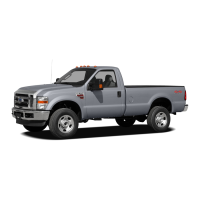
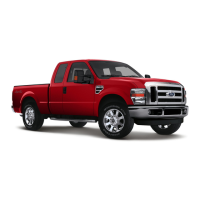
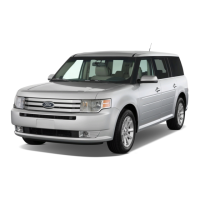
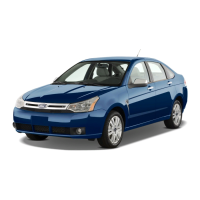
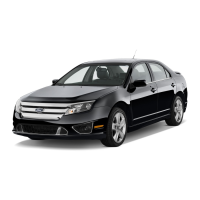
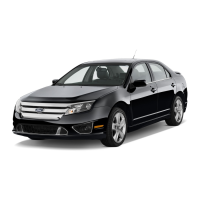

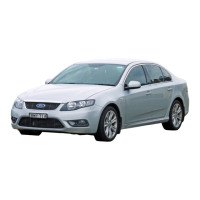



